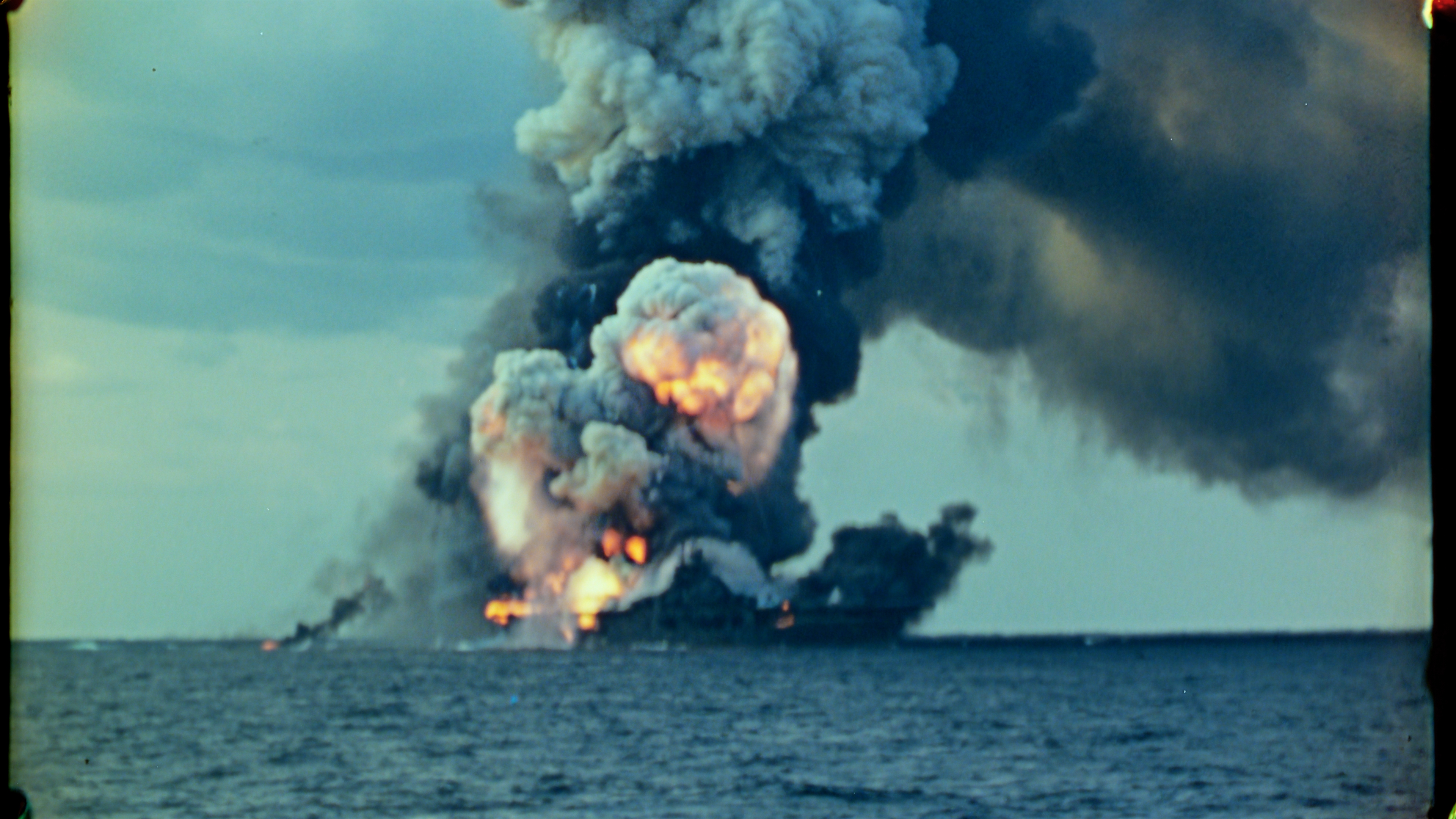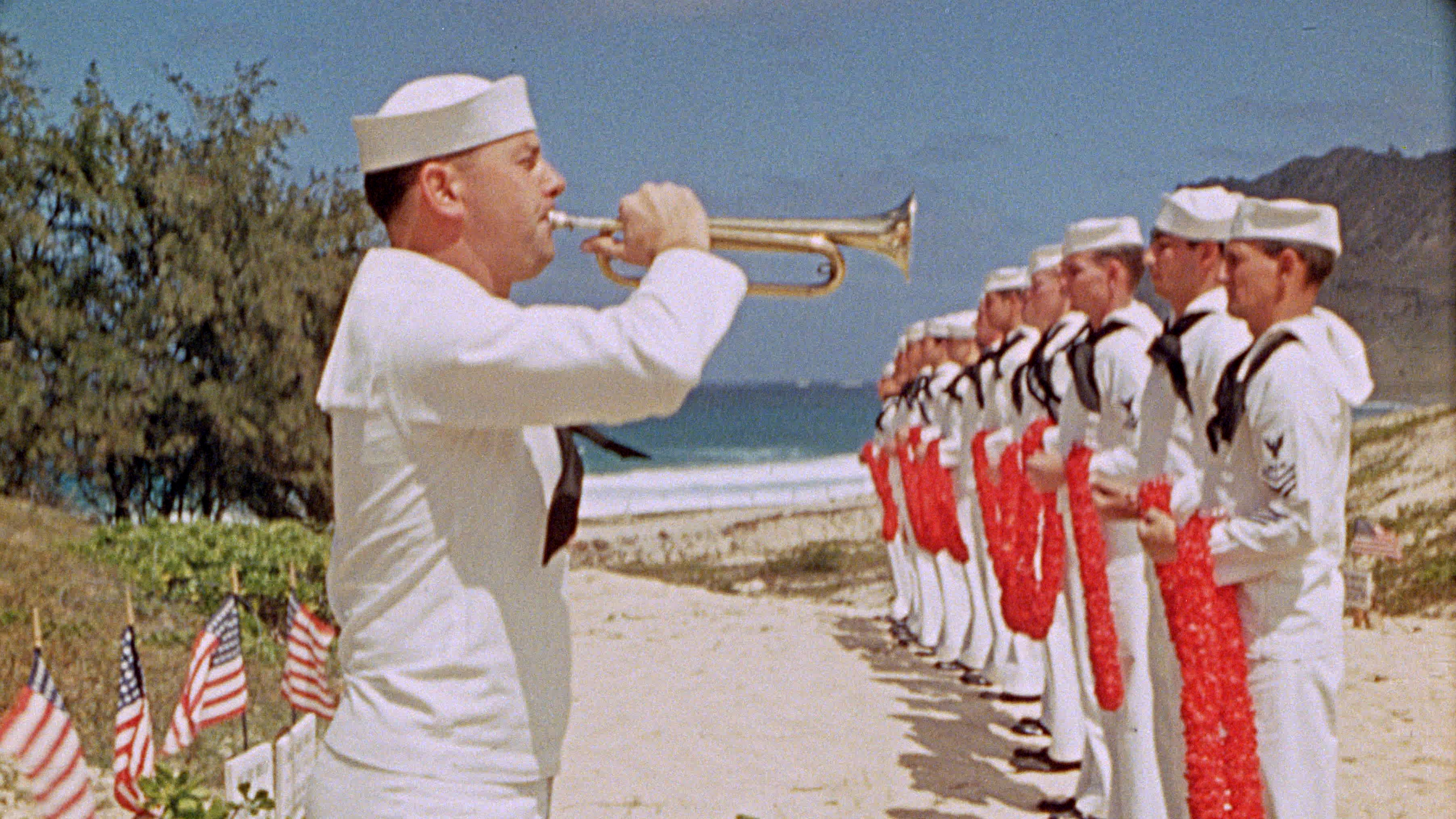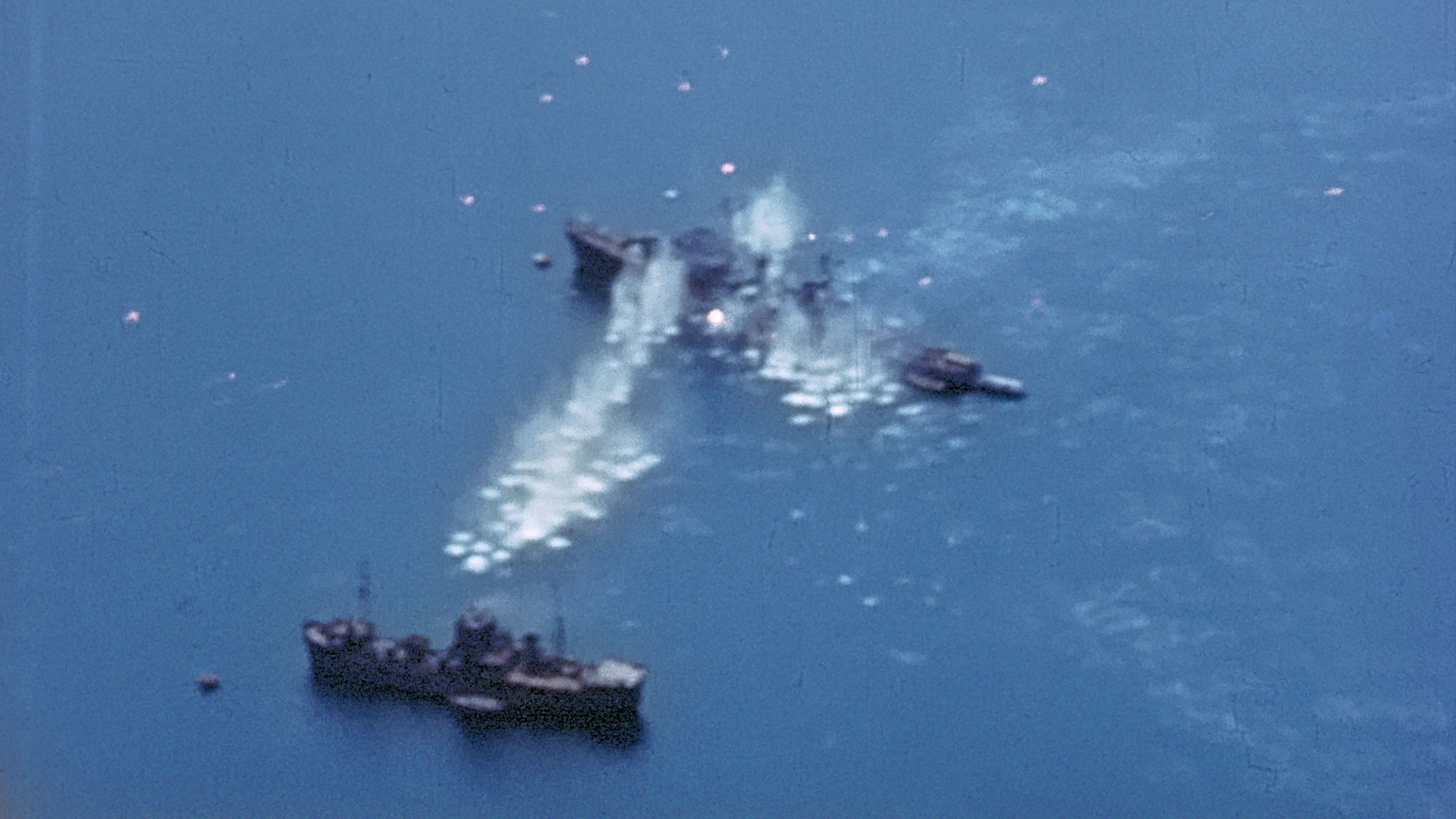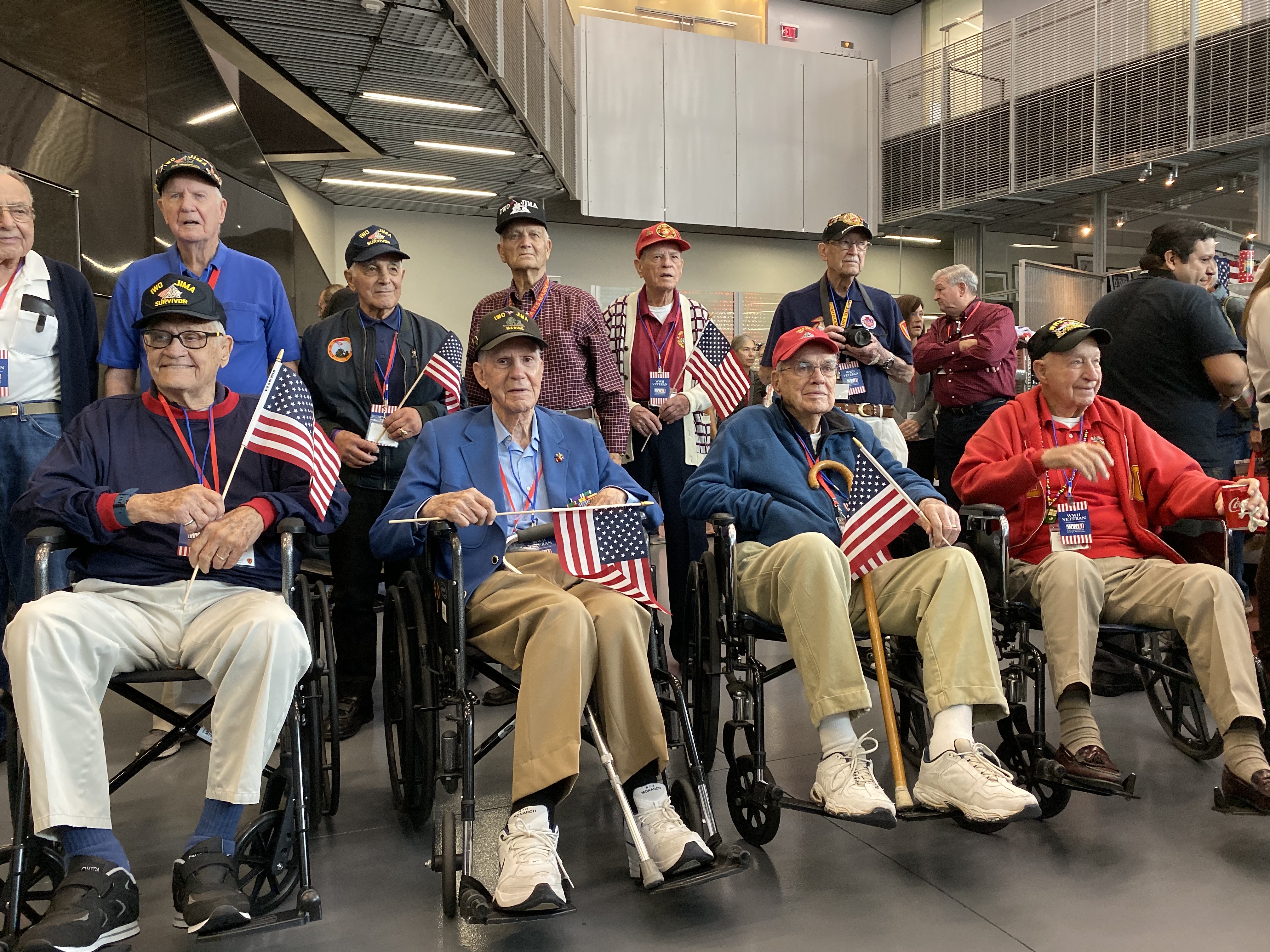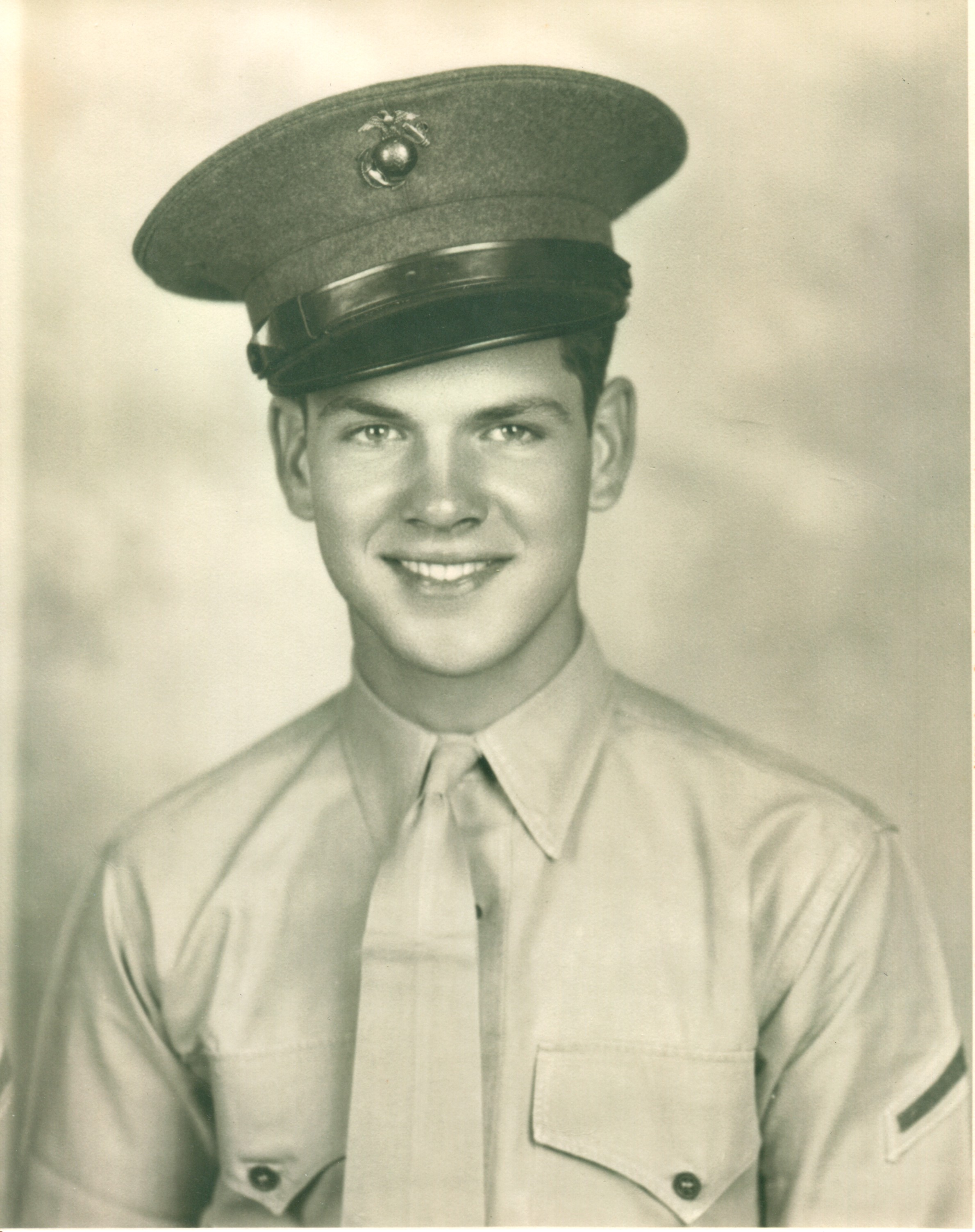Francis Ford Coppola’s 1979 feature Apocalypse Now depicted war crimes committed by U.S. troops against Vietnamese people: An unforgettable, operatic, bone chilling chopper air raid attacking a Viet Cong village set to Wagner’s “Ride of the Valkyries” so a surfer whose name is initialed “LBJ” can ride the gnarly waves there (Ride of the Valkyries - Apocalypse Now (3/8) Movie CLIP (1979) HD - YouTube); a Yankee patrol boat opens fire on a traditional Vietnamese craft after a woman tries to protect a puppy (APOCALYPSE NOW - I told you don´t stop - YouTube); and so on.
Erik Nelson’s Apocalypse ’45 is also a film about Americans at war with Asians – but this time, against the Japanese in the final months of World War II. Towards the end of this harrowing WWII picture, a veteran ruminates on “the bad guys”, that is, the Imperial Japanese. With their cruel crimes against humanity, the Yankee imperialists in Apocalypse Now may be the bad guys, but in Apocalypse ’45 the U.S. Marines, soldiers, airmen and sailors firebombed Tokyo and dropped atomic bombs on Hiroshima and Nagasaki, wreaking widespread devastation and wiping out untold numbers of civilians. And that’s what Americans did when they were considered “the good guys”, although the atrocities committed by the U.S. against Japan during WWII were arguably far more ferocious and vicious than those carried out in Indochina.
Unlike Coppola’s classic, Apocalypse ’45 is a documentary, composed mostly of previously shot material from, “the National Archives [which] opened their vaults and allowed access they had previously denied to over 700 reels of this footage,” according to press notes.
(In a recent interview I did with Ken Burns about his charitable activities, the documentarian told me: “I give to the National Archives. I’m on the board of the zillion groups that advises and tries to raise money for the National Archives. In large measure because I haven’t made a film that hasn’t drawn on the Archives as an important visual resource.” A U.S. federal agency, the National Archives and Records Administration is America’s record keeper, including 25 million still photographs; 300,000 reels of motion picture film; 400,000 video and sound recordings. See: National Archives |).
I strongly suspect that much of this treasure trove of color vintage footage was unreleased – if not outright suppressed – for about three quarters of a century because much of it is so gruesome and graphic that it thoroughly debunks the notion that warfare is glorious, even during the so-called “Good War.” John Huston’s 1946 doc Let There Be Light, made while the Hollywood helmer served in the U.S. Army Signal Corps, was so candid in its depiction of PTSD that it was censored for decades. As one of Apocalypse ’45’s vets laments, many have said “war is hell. It really is hell. But I never visualized it as being that bad.” It can be argued that this more unvarnished look at the truth is in keeping with the historic reckoning we’re currently undergoing, wherein while disasters like the Tulsa race massacre were previously swept under the rug, they are now the subject of CNN, CBS, PBS and History Channel documentaries – and presidential speeches.
Erik Nelson, a seasoned, Emmy-nominated nonfiction filmmaker who has made a number of war docs and produced Werner Herzog’s 2005 Grizzly Man, shapes his 105-minute WWII epic shrewdly. In terms of imagery, it is almost completely a compilation film, that is, composed of pre-shot footage by other cameramen (Apocalypse ’45 is dedicated to combat photographers) and filmmakers. There is no narrator per se, although numerous screen titles serve as a form of unspoken narration. However, a number of WWII veterans now in their nineties provide insightful, moving spoken commentary in original interviews apparently conducted specifically for this film. They remain unseen and unidentified until the very end of Apocalypse ’45, when we finally get glimpses of the speakers, plus their names, ages, ranks and where they served are revealed in moving and still images, along with photos of them now and then – in 1945, when they fought to make the world safe from fascism. These vets include Richard Spooner, Hershel “Woody” Williams and B-29 pilot Thomas Vaucher, 101-years old when he was interviewed in 2020.
Minus any grandstanding Michael Moore-like contemporary narrator, using the above film techniques, Apocalypse ’45 is cleverly crafted to tell its WWII tales from the POV and in the words of those who fought it. Although there are a handful of scenes that appear to have been shot by Japanese cameramen, including of Imperial aviators. The noted Hiroshima-born cinematographer Akira “Harry” Mimura, who shot Akira Kurosawa’s first feature, 1943’s Sanshiro Sugata, a production made by Toho Co., Ltd. – the fine film folks who also gave us Godzilla – is interviewed at his atomic bombed-out city, speaking in English. But having said that, this film has a decidedly American tilt.
Apocalypse ’45 sort of bookends with Hiroshima, with rarely if ever publicly seen footage shot by a U.S Army medical camera crew there and at Nagasaki as the decimated cities smolder and burn victims are treated. Honolulu also figures in the opening and ending of this saga, including scenes lensed by Hollywood legend John Ford, a Rear Admiral during WWII, of Pearl Harbor shot shortly after the sneak attack, revealing a ravaged Pacific fleet that Apocalypse ’45 has rescued from archival obscurity hidden away in the vault.
Like the war in the Pacific Theater, Apocalypse ’45 wages an island-hopping campaign, ranging from Hawaii to the Philippines, Peleliu (at Palau), Iwo Jima, Tinian, Okinawa, and inevitably to Tokyo Bay, where Gen. Douglas MacArthur and Japanese officials sign an unconditional surrender aboard the USS Missouri on Sept. 2, 1945 (in a bit of canny karma, that battleship is now located at Pearl Harbor, a fitting Alpha and Omega for America’s involvement in WWII). There are few scenes shot outside of the Pacific Theater aside from the atomic bomb site at New Mexico and Potsdam, Germany, where Pres. Harry Truman met with British Prime Minister Winston Churchill and Soviet leader Josef Stalin in the summer of 1945 to confer on the USSR’s declaration of war on Japan and to map out the postwar world.
In addition to the scorching scenes of A-bombed Hiroshima and Nagasaki, the most dramatic footage in Apocalypse ’45 depicts the Kamikaze – pilots who, like the 9/11 zealots on suicidal missions, “turned planes into self-guided missiles,” as one of the veteran commentators says in voiceover – wreaking havoc on U.S. aircraft carriers, battleships, etc., killing 4,500 servicemen at sea. Speakers comment on the “fanaticism” of the Kamikaze flyers, and this is an important point to stress, that fascism is the politics of the irrational. There is also eye-popping aviation footage of dogfights and bombing raids that Coppola would have loved to have directed. Offscreen, one of the speakers points out that “gun cameras were activated by the same switch as the firing,” which likely added to the extensive array of aerial celluloid.
There are also horrific scenes of flamethrowers scorching caves and pillboxes – in one shocking sequence Japanese POWs pull a charred corpse out of a cave with a rope, and throughout this film viewers are not spared the sight of gaping wounds and shot up cadavers. But for my money, the most awful scenes were lensed at Saipan, which had served as a capital of Nanyo, Japan’s South Seas empire (aka Micronesia) and was the site of terrifying WWII battles. Hundreds of Japanese civilian settlers, many of them mothers and their children, leapt from cliffs rather than surrender to the advancing Yankees, and heartbreaking examples are glimpsed.
Throughout the film commentators propound the dubious proposition that dropping atomic bombs on Japan shortened the war and, in the long run, saved millions of lives. (Surprisingly, uber-hawk Gen. Curtis LeMay, the architect of firebombing Tokyo, opposed nuking Hiroshima and Nagasaki, according to the doc.) Apocalypse ’45’s titles do take note of the fact that this contention is disputed. However, although we get a glimpse of Stalin at Potsdam, the counterarguments that Japan was looking for ways to surrender, that the real target of the A-bombs was the USSR, that Washington wanted to make sure that Moscow did not invade Japan after finally declaring war on it, et al, are never expressed, as they are, for example, in Oliver Stone’s 2012 The Untold History of the United States.
The 90-something-year-old veterans do wax poetic in their commentaries on the nature and costs of war. One particularly thoughtful meditation on murder and mayhem, even in the name of your country, laments: “There’s no glamour in killing.” Thus declares a 94-year-old vet who adds that soon, “I’ll have to stand before god and answer for” what he did about 75 years ago.
Apocalypse ’45 is not for squeamish, sensitive souls and children. However, it is a must-see for WWII and history buffs and for lovers of the documentary medium. It was timed to open on Memorial Day and can be seen on Discovery+.
L.A.-based film historian/reviewer Ed Rampell is the co-author, along with Luis Reyes, of Pearl Harbor in the Movies.

